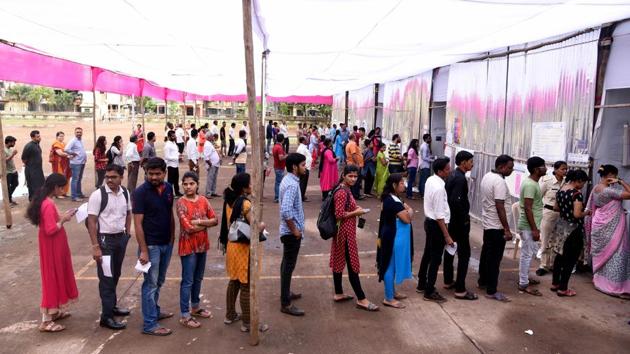Why Mumbai’s voter disinterest is a disgrace
Mumbai did not acquit itself with honour this Assembly election; south Mumbai even less so. The average voter turnout in the city this Monday was a dull 50.5% – about 10.6% lower than Maharashtra’s average and about 1.5% lower than the city’s turnout five years ago.
Mumbai did not acquit itself with honour this Assembly election; south Mumbai even less so. The average voter turnout in the city this Monday was a dull 50.5% – about 10.6% lower than Maharashtra’s average and about 1.5% lower than the city’s turnout five years ago. It’s also about five percentage points lower than the turnout this summer for the Lok Sabha polls.

The lowest is 37% in the 1980 Assembly election, followed by the surprisingly low 46% in 2009, barely months after the city was shaken by the 26/11 terror attack.
Why don’t Mumbaiites vote in large numbers? Why does only one in every two voters step out to cash his/her vote?
Psephologists and sociologists have a lush area of research here. Back-of-the-envelope readings show some trends.
The first is that voters in Indian metros are generally more laidback in exercising their franchise when compared to their states’ average in Assembly elections. The turnout in Chennai was only 55% when Tamil Nadu turnout was 74% in 2016; Hyderabad voters recorded 50% turnout when Telangana clocked in at nearly 74% last year; the turnout in Bengaluru was only 54% when the Karnataka average last year was 72.5%. Only Kolkata recorded a high turnout three years ago at 81.6% but even this was lower than the West Bengal average by two percentage points.
Given this, it would be unfair to heap outrage on Mumbai’s voters as has been happening in the last three days. This is certainly not to suggest that Mumbaiites should be content. There is, simply put, no excuse for not voting in an election but Mumbai is not an urban exception.
The second is that there are differences within the city. The suburbs recorded 51.5% while the island part barely touched 48%. Of this, Colaba was at the bottom of the heap with an embarrassing 40%; the affluent areas of Bandra, Andheri, and Goregaon saw voter turnouts in the region of 40-46%, and Kurla was the only outlier in the middle-lower class area which joined this group.
This toes the belief that the more affluent are least likely to vote because they have other ways to make their mandate known and other levers of power with governments. Even so, Adi Godrej voted; film stars, cricketers and other celebrities proudly showed off their inked fingers. But the ennui is more perceptible among the well-off sections of the city’s population. Bandra West, Andheri West, Versova all fit into this pattern.
The third is that in a one-legged race, a virtual no-contest, a predictable outcome does not motivate voters. In 2004 and 2009 Assembly elections, the Congress with Nationalist Congress Party in a cameo role took 19 and 20 of Mumbai’s 36 Assembly seats. Five years ago, the trend reversed and BJP-Shiv Sena won 29. This election saw a deeply-divided Congress, a virtually non-existent NCP, and a fracture among other smaller players.
Congress leaders Milind Deora and Sanjay Nirupam not seeing eye to eye; incumbent president Eknath Gaikwad unable to get a grip on the campaign; and the unwillingness of the party high command to crack the whip meant that Congress — Mumbai’s largest single Opposition party — was not heard or seen as much. Mumbai did not lack issues, it’s that these issues did not find the political articulation they should have and offer a choice to voters.
Pothole deaths, Aarey forest, and the PMC Bank collapse should have been issues to campaign on; the BJP-Sena got away campaigning on Article 370 abrogation and Ram Mandir construction. The refrain on the streets and in suburban trains was: Who should we vote for? Our vote does not even matter because the same parties are coming back to power.
All parties need to reflect on this. However, none of these can be excuses or justifications for the one in every two who did not vote. Citing these excuses would be disingenuous because it masks the voter’s apathy. Irrespective of the lack of choice of candidates, it is every voter’s responsibility to evaluate the track record of those seeking his/her vote and make a choice. This is why the 50.5% turnout is a disgrace.
If the BJP-Sena win 29 or more seats, it isn’t because they deserved to; it’s because Mumbaiites gave them a free pass.






